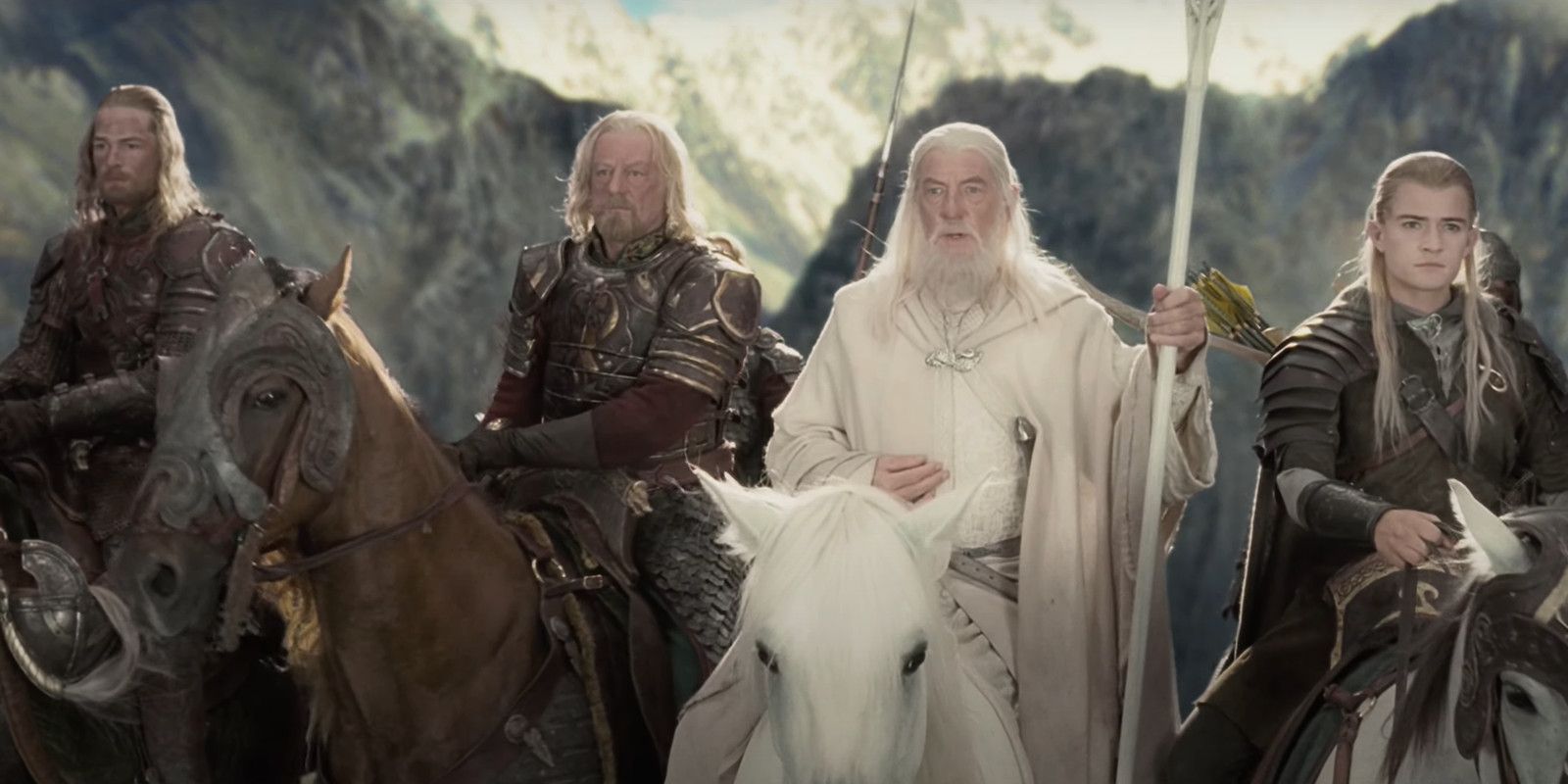
Peter Jackson‘s Lord of the Rings trilogy included several epic battles, and many fans consider the Battle of Helm’s Deep from The Two Towers to be the most impressive. When the king of Rohan, Théoden, realized his city of Edoras was vulnerable, he led his people to the fortified stronghold of Helm’s Deep, hoping to withstand an attack by the powerful wizard Saruman and his army of Uruk-hai. J.R.R. Tolkien devoted a chapter to the battle in his novel, but described it generally, focusing more on the overall events than individual fights, and relying heavily on characters talking about what was happening. To bring the battle to life on film, Jackson looked to a 1964 war movie for inspiration.
Cy Endfield’s film Zulu tells the story of the Battle of Rorke’s Drift, a famous clash during the Anglo-Zulu War in the late 1800s. The film depicts how the British 24th Regiment bravely defended a mission station called Rorke’s Drift, which was near the border of the Zulu Kingdom. Zulu was a big hit with both critics and audiences when it came out and remains a well-regarded film today, currently holding a 91
The Battle of Helm’s Deep Mirrored the Battle of Rorke’s Drift
It’s easy to see why Peter Jackson drew inspiration from the Battle of Rorke’s Drift when creating the Battle of Helm’s Deep – the two conflicts share a lot of similarities. In both cases, a small group of soldiers had to defend a fort against a much larger attacking force. The Uruk-hai army had 10,000 soldiers against just 300 Rohirrim, and the Zulu army outnumbered the British by 4,000 to 150. Furthermore, many of the defenders in both battles were weakened by illness, injury, age, or inexperience. Both conflicts also occurred after significant defeats for the defending side – in The Two Towers and at the Battle of Isandlwana (as depicted in Zulu). These factors made the attackers seem certain to win, but surprisingly, the defenders managed to fight them off and ultimately contribute to victory in the larger war.
Initially, the battle in Zulu and The Two Towers seem very different. Zulu happened in bright daylight, while The Two Towers took place during a stormy night. The soldiers at Rorke’s Drift also had much better weapons. However, there were some parallels in how the directors, Endfield and Jackson, approached the action. Both battles started with the attacking army advancing and the defenders holding their fire, waiting for the enemy to get closer. The attackers paused for a ritual, creating a frightening beat by pounding their weapons. The defenders used ranged attacks to thin the enemy ranks, but this didn’t last long. The attackers then surged forward from all sides, forcing the defenders to spread out and leading to intense close-quarters fighting. Despite these similarities, Jackson’s biggest influence from Zulu actually happened before the battle began.
Zulu Was Peter Jackson’s Inspiration For a Perfect Movie Battle
In The Two Towers‘ commentary track, Jackson explained,
The impact of a battle scene often comes down to how well it’s been prepared. It’s not just about the action itself, but creating tension and anticipation leading up to it. A truly great battle, like the one in Zulu, isn’t exciting because of the fight, but because of the careful and gradual build-up beforehand – it’s the best I’ve seen in any movie.
While exciting action is fundamental to a good movie, audiences truly connect with it only when they care about the characters and understand what’s happening. The film Zulu skillfully builds this connection. Although the threat of attack appears early on, the actual battle doesn’t begin for a full hour. This allows the movie to introduce us to the soldiers and their personal stories, making us invested in their fate. It also carefully explains the location and the battle plans, so we understand what’s at stake. Throughout this buildup, the tension steadily increases as we wait for the conflict to begin.
Peter Jackson couldn’t spend as much time detailing the Battle of Helm’s Deep as he did with Zulu because The Two Towers had multiple storylines to follow. Still, he used similar filmmaking approaches. While scenes of the Rohirrim setting up camp didn’t directly advance the plot, they helped audiences connect with and care about them. Jackson also included shots specifically to show viewers the layout of Helm’s Deep itself. Crucially, both films emphasized how little chance the defenders had, making their ultimate victory much more satisfying. By combining descriptions from Tolkien, lessons from Zulu, and his own creative choices, Jackson crafted one of the most impressive action sequences in fantasy cinema.
Read More
- Ashes of Creation Rogue Guide for Beginners
- Best Controller Settings for ARC Raiders
- Meet the cast of Mighty Nein: Every Critical Role character explained
- Tougen Anki Episode 24 Release Date, Time, Where to Watch
- Eldegarde, formerly Legacy: Steel & Sorcery, launches January 21, 2026
- Fishing Guide in Where Winds Meet
- Avatar 3 Popcorn Buckets Bring Banshees From Pandora to Life
- PICROSS S SNK Classics & NEOGEO edition announced for Switch
- Knives Out 3 cast – Full list of confirmed actors for Wake Up Dead Man
- Crypto Market: Fear Rages While Wallets Scream 🤯💸
2025-11-14 17:13